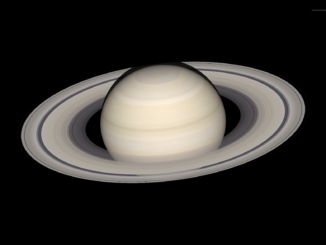As it entered the Saturn system, NASA’s Cassini spacecraft performed its first targeted flyby of one of the planet’s moons. On June 11, 2004, Cassini passed Phoebe, the largest of Saturn’s outer or “irregular” moons, at an altitude of just 1,285 miles (2,068 kilometers). This was the sole close flyby of one of the outer moons of Saturn in the entire Cassini mission.
The image on the left side shows Cassini’s view on approach to Phoebe, while the right side shows the spacecraft’s departing perspective.
Phoebe’s shape is approximately spherical, with a diameter of 136 miles (219 kilometers) on its longest axis and 127 miles (204 kilometers) on its shortest axis, which is also the rotation axis. This is approximately 16 times smaller than Earth’s moon.
For several reasons, Phoebe is thought to be a captured object that does not share a joint origin with Saturn and the inner, “regular” satellites. It orbits in a retrograde direction, opposite to the direction of Saturn’s other major moons. Its overall density was determined by Cassini scientists to be quite large for a moon of Saturn. The prevailing view is that Phoebe might have formed in the Kuiper Belt, far beyond the orbit of Saturn. It might thus be a small cousin of the largest Kuiper Belt object, Pluto.
Image: NASA/JPL-Caltech/Space Science Institute.




